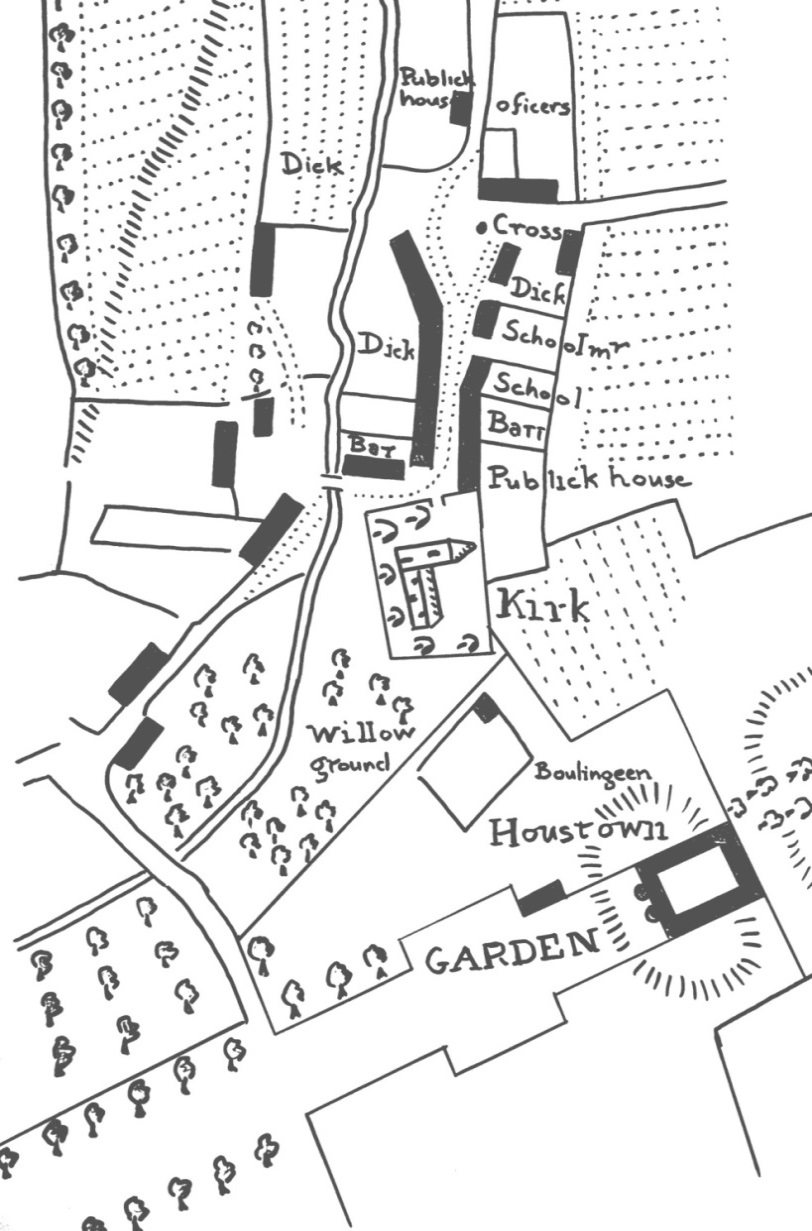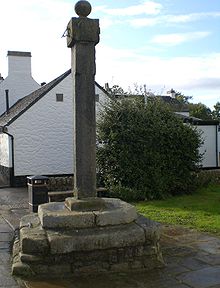Houston village was traditionally one of the seventeen parish villages or kirktouns in Renfrewshire. From the middle of the eighteenth century, Houston estate passed from the Houston family through various owners, the most wealthy of whom were colonial planters, including one from Jamaica, and another who was an island Governor. The biggest changes to the village occurred from the 1780s, again with sugar and tobacco money, when the whole estate was purchase by another colonial merchant, Archibald Speirs of Elderslie.
Speirs carried out a survey of his whole Houston estate, which comprised more than a thousand acres of Houston parish situated along the Gryfe Water, and north towards Barochan and Kilmacolm. The proposal was to improve the lands and also to create a new planned village. Building commenced in 1781 and two streets were laid out, parallel with the Houston Burn.
Unlike Bridge of Weir and Crosslee nearby, Houston has no river running through it. Despite this, and the rural situation, the very modest Houston Burn was managed to provide power and process water for at least five new industries to provide employment in the new village. Reservoirs were built further up the burn to store water. Four bleachfields were laid out along the burn. The largest, just west of the new village, was owned by the Carlisle family of Paisley, and whitened cotton yarn, sewing thread, muslins and lawns.
In the early 1790s, Paisley merchant Robert Park purchased land beside the avenue of Houston House, including Gardeners Acre, Goosebutts, Milnhouse and Saughfence Parks. Part of the area was flooded to create a reservoir, and
a lade was diverted off the burn to create a fall of thirty feet. This drove a water wheel, which powered a cotton spinning mill, four storeys high and a hundred feet long, employing 140 locals. Textile manufacture also provided the main employment in the village itself, with 42 looms in private houses, weaving cotton, muslin, lawn and silk gauze. There was also a small centralised ‘factory’ or weaving shop where handloom weavers wove expensive fabrics. In its first decade, the village population rose from sixteen families to fifty seven.

The plan shows the pre-1780 Houston village.
“Houstown” is the old castle
The downside to the new planned village was that we have little record of the earlier pre-improvement village. Fortunately, in recent years, the estate plans surveyed c.1780 have been rediscovered. More than a dozen colour plans show each farm on the estate, plus the old village, just before the new village was laid out. They show the old village of Houston, including the school and two pubs, clustered around the market cross and the parish kirk, which had been rebuilt in 1775.
The Houston estate plans, can be viewed at the National Library of Scotland or by contacting RLHF.
© 2015 Stuart Nisbet, Renfrewshire Local History Forum

